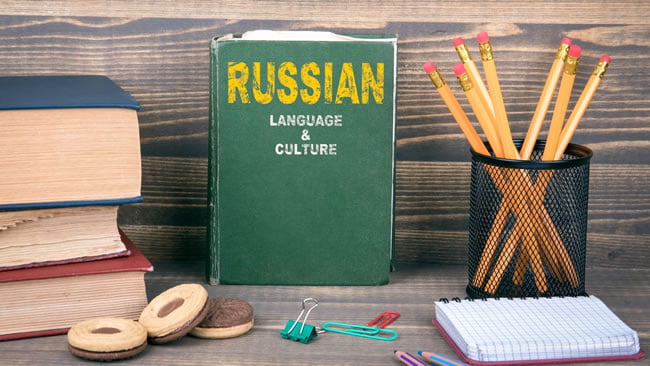Russian Translation Services: About the Russian Language
Russian Language Origins and Translation

Let’s start from somewhere around 3500 to 2500 BC, the era when people were speaking the Indo-European language. As time passed, it created various dialects within the community, and eventually, the tribes were divided into West and East. The Slavic society invented its language, separating from the rest and building its presence in Eastern Europe. East Slavs settled down next to the Dnepr River (nowadays that is Ukrainian land), reflecting on the first language that appeared in the 9th century, called the Old Russian or Eastern Slavic. A long time after that, the language was split into three dialects – Russian, Ukrainian and Belarusian. The first major written Russian translation work was first recorded in Novgorod, 1499.
Russian Language Locales
Currently Russian is the official language in 4 countries (Russia, Belarus, Kazakhstan and Kyrgyzstan). The use of this language expands throughout the areas of Caucasus, Central Asia, some of the Baltic countries and most parts of Ukraine. 258 Million people speak the Russian language and it has become the eighth most spoken language globally. No wonder why Russian is one of the six official languages of the United Nations!
The Russian language is also very useful in space. If one day you decide to become an astronaut, Russian will be the preliminary language along with English in your training program.

Russian Language Challenges
The Russian language is famous for its complexity not only in pronunciation but also its grammar. I often hear my friends say that they are unsure when we feel happy and when we are sad, unless you sense it in our facial expressions. It is true, as the rhythm of the language is very smooth and does not carry a lot of artistic and emotional character, like French or Italian for example.
So, what are those Russian language challenges that we can come across?
If you are familiar with cases from your native language, then this might be easy for you, as in the Russian language there are 6 of them.
Just to show it on a brief example:
“I am going to meet my grandmother for lunch.” “I have invited our grandmother for lunch.” “I was invited to the house of my grandmother for lunch.”
All of the above words “grandmother” will not be written in the same way. In each sentence, you will see a different ending, with different pronunciations and spelling.
Another challenge about the Russian language is the use of verbs. Not only conjugation but also the verbs of motions with prefixes. There will be the same root in the word, but the meaning will change if you add one or two letters in the beginning.
Likewise, punctuation has different rules in the Russian language. Commas have a very special place in the sentence as well as quotes. Considered these factors when translating from the Russian language.
Translation & Interpretation Demand in the Russian Industry
According to Statista, Russian is among the top 10 in-demand languages for translations worldwide. However, it is interesting to see how quickly the trends have changed, having the economic and pandemic impact.
Nowadays, the major localization opportunity for the Russian market is in the nuclear energy sector. The demand and industry expansion for the last 5 years have increased from $66 billion to $133 billion. The development of the services in engineering and software of the nuclear energy sector has influenced the growth of translation needs.
In comparison to the oil and gas industry, unfortunately, the demand for localization services went down. The revenue from export goods has fluctuated a lot for the past five years, causing a drop of 45% in the market.
Translations in the defense hardware sector have increased by 4% revenue, which shows its consistency on demand.
According to the CSA survey, there is a demand for interpretation in the healthcare industry too. Reports show a 59% higher demand from the life sciences, pharmaceuticals, as well as medical sectors.
Conclusion
There is no doubt that the pandemic has a huge impact in the Russian market localization industry. That shift brought new beginnings and opportunities, proving an ability to adapt to challenging and tough times.
Nowadays, the key players in the industry include patented products development, technological solutions, gaming industry, healthcare sector, and pharmaceutical services.
The projection is that translation businesses will also continue to seek opportunities under the service umbrella such as SEO development, marketing solutions, copywriting, and others.
